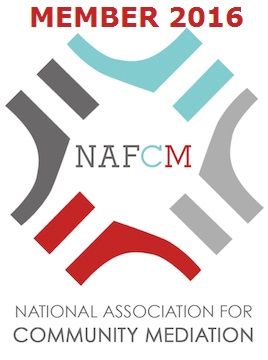Juvenile Restorative Justice Dialogue (also known as Victim Offender Conferencing or Victim Offender Mediation) is one of several restorative dialogue models allowing young people and those who they have harmed a process to attempt to repair the harm resulting from an offense through safe, constructive dialogue. Trained facilitators first meet individually with the person who has been harmed and the person who has caused harm to listen to the stories of each, and to determine whether a joint conversation is appropriate, and whether each individual voluntarily wishes to participate. If so, the facilitator convenes a joint meeting in which both individuals are guided to talk about the offense and its impacts, offer apologies, and propose a reparation plan. If agreed to, the plan is signed, and is tracked for completion and fulfillment.
What are the benefits of Juvenile Restorative Justice Dialogue?
- Individuals who have been harmed express higher satisfaction for being involved and for having a meaningful voice in the process
- Youth who caused harm have higher rates of completing restitution and community service
- Research demonstrates lower recidivism rates for offenders who meet with their actual victim (see link below, National research studies cited in the Fact Sheet)
- Community volunteerism increases a sense of community investment
- Interagency collaboration results in stronger services throughout a county
- Earlier interventions with restorative dialogue lead to overall cost-savings
What is the sequence of a typical restorative dialogue case?
- Case referred to regional mediation center from partner agency
- Initial letters and phone calls to both parties
- Preparation meeting(s) with youth and parent
- Preparation meeting(s) with impacted party (victim)
- Joint mediation/conference meeting
- Tracking of reparation agreement
- Completed case information sent to partner agency
What if the actual victim chooses to not participate?
One of the core principles of restorative dialogue is that a person who has been harmed always has full discretion as to whether or not to meet with the person who has caused the harm. If an individual chooses not to participate, trained surrogates and community members can participate in conference meetings instead. In this way, a young person who has caused harm can still be part of a meaningful restorative conversation with the opportunity to enter into a signed reparation agreement.
What are the best practices for Juvenile Restorative Justice Dialogue?
- Adequate screening and preparation of parties
- Voluntary participation of all parties
- Guidance by third-party mediators / facilitators
- Confidentiality agreed by all participants
- Invitation for support people and family to be present
- The power of storytelling, listening, and being heard
- Consensual agreements for repairing harms and setting goals
A typical dialogue process covers the following:
- What happened? – Dialogue about the offense
- Who was affected? – Discussion of all impacts
- What can be done? – Exploration and determination of needed reparation
The three main themes of restorative dialogue:
- Ownership: the youth takes ownership and responsibility for his or her actions
- Empathy: both the person harmed and the youth may experience empathy
- Reparation: the youth and person harmed determine how to repair the harm
This sequence is designed to help all parties shift from the past to the future, and to help youth internalize their motivation to apologize and make amends by considering how their actions affect other people. This ‘response-ability’ gives a new meaning to accountability which is no longer a negative punishment that a youth ‘takes’, but rather a positive obligation to make things right that a youth ‘gives’.
Where do referrals come from?
- Schools (pre-arrest / pre-charge)
- Law Enforcement (diversion)
- County Attorneys (diversion)
- Courts (pre-adjudication)
- Probation (condition of court sentence)
- Post-sentencing (for severe crimes)
Adapted from a Fact Sheet compiled in 2017 by the Center for Restorative Justice & Peacemaking, University of Minnesota.





